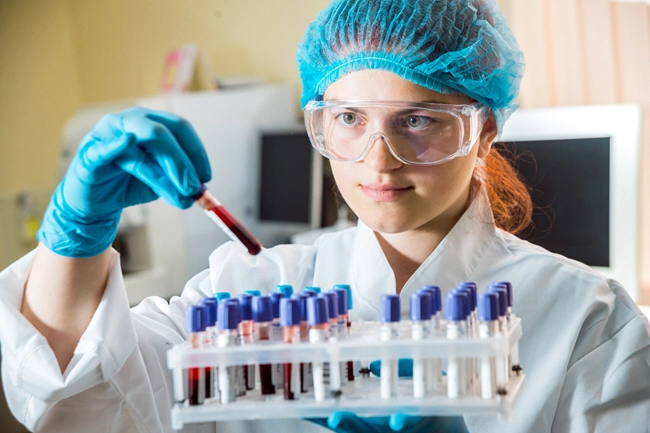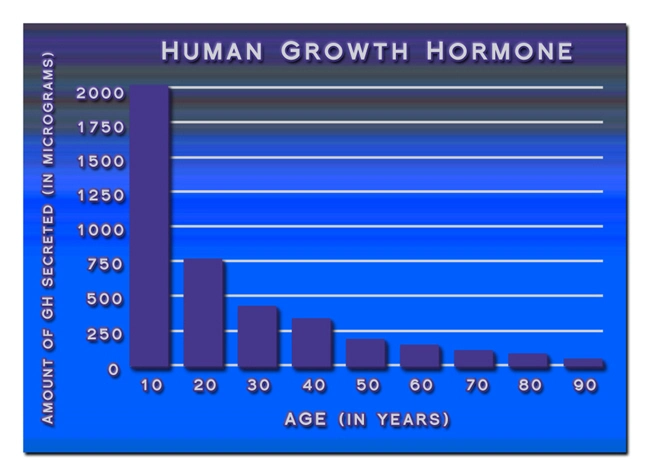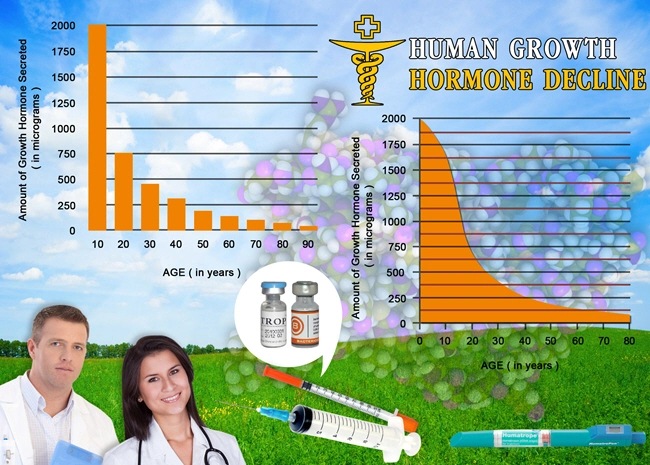
Video Link: https://vimeo.com/252590813
Video Download: Click Here To Download Video
Video Stream: Click Here To Stream Video
What is a gene? Straightforward and easy answer:
The vital portion of DNA that makes us who and what we are
Keep reading to learn more about this fascinating miracle of nature
There is a theory that Human Growth Hormone (HGH) stimulating gene therapy can revitalize our bodies without severe side effects. To date, raising growth hormone with plasmid therapy has achieved success with farm animals. For now, this remains an unproven technique. But the deeper question is what is a gene? Let's take an in-depth look at the mystery of genes.
Why do some brothers and sisters have different physical traits such as eye color, size, and temperament in spite of sharing the same two parents? It’s all in the genes, the part of deoxyribonucleic acid (DNA) that is on a mission of making us who we are.
DNA contains the blueprints for specific enzymes and other proteins.
The genes include strands of DNA that whorl together similar to stairs and form chromosomes.
This DNA contains the signal for the chemical action (through ribonucleic acid aka RNA) and dictates where specific proteins and enzymes are manufactured.
Why are Genes so Important?

Genes control both the metabolic functions and the structure of our cells.
This means they control the entire body, and pass their DNA-coded information to the next generation.
Without genes, the genetic code of thousands of our ancestor’s generations would be lost.
Contained within each gene is an exact sequence of nucleotides, which are DNA building blocks.
Three subunits make up each nucleotide: sugar, a phosphoric acid, and a compound containing nitrogen.
Geometrically, the structure of the gene is a double helix shaped by nucleotides.
What is "Junk DNA?”
Gene loci are positioned next to parts of DNA that do not code for proteins. These non-coding parts are called “junk DNA” and make up 98% of the total DNA in the entire human genome (all genes in the body).
Why is this important? Because in spite of its name, junk DNA is required for the correct operation of the cells.
To help understand why this is so, consider this: the moniker “junk DNA” may not be accurate. Perhaps “non-coding DNA” would be more appropriate.
There are several theories as to the origin of junk DNA and why it still exists.
One theory suggests that junk DNA could be the remnants of ancient DNA that lost its coding ability but survives in a new role as a “protective barrier” from  genetic mutations and damage.
genetic mutations and damage.
Another hypothesis proposes that junk DNA might be the proper environment from which new genes can be born and emerge.
This would explain genetic evolution.
Still another explanation states that junk DNA could be akin to “filler material” designed to allow enzyme groups to develop around working DNA elements more quickly.
If true, this means that junk DNA would play a vital role in our genetic code even if it contains no relevant codes.
Finally, it is possible that junk DNA has no useful role to play, or may assist some currently unknown regulatory functions.
The Human Genome
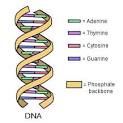
The total of all the genes in our body’s chromosomes is called the genome. Here is a brief explanation of the steps involved in the functioning of the human genome system:
- Each chromosome is unique and contains a precise number and accurate alignment of genes. If either one of these figures or arrangements changes in the slightest, a mutation can result. This variation can occur in both the egg and sperm cells.
- When this mutation occurs, the alteration can be passed on to the next generation. This can result in severe, adverse conditions. For example, if the somatic cells are mutated, cancer may occur.
- Genetics is the study of inheritance. An organism’s genetic makeup is called its genotype. Both the environment and the genotype play a role in the characteristics of the newborn.
Gene Therapy: A Potential Life-Saving Treatment
Genetic Engineering (the use of genes) in treating genetic disorders or prolonged diseases is called gene therapy.
This exciting, new technology holds out the promise of curing many afflictions that are currently not treatable.
At present, most of these techniques are still in the experimental stage. Let’s take a look at the two main approaches.
The two primary methods of gene therapy are in vivo and ex vivo.
The in vivo approach inserts genetically altered genes directly into the patient.
The ex vivo method uses the patient’s cells by removing tissue from the patient, pulling out the required cells, genetically altering them and then returning them right back into the patient.
However, ex vivo is not a simple, straightforward procedure.
The challenge lies in figuring out how to deliver the nuclei into the right cell in a manner that will allow it to be reproduced in the ordinary process of cell division and have a long-lasting effect.
allow it to be reproduced in the ordinary process of cell division and have a long-lasting effect.
One approach to solving this puzzle is to remove cells from the patient, alter them with good blueprints of the defective gene, then inject them back into the patient.
Another attempt is to insert a gene into an inactive or harmless virus and “piggyback” the desired gene on this latent virus and deliver it into the patient’s cells.
A liposome (a small, fat-encased pouch that can cross cell membranes) can also be used to transport genes into human bodies.
Here is where things get interesting. Once back in the patient’s body, the gene may produce a necessary chemical that cannot be expelled from the patient’s body. The protected gene then attacks the gene or substance causing the disease. The new gene can also subject cancer cells to assault by conventional drugs.
Gene Theory isn’t Just Theory
It has been done before. 1990 marked the first time gene therapy was used to treat a child stricken with adenosine deaminase deficiency (ADA), a hereditary and rare disorder of the immune system.
As research continues, there is increasing optimism that gene therapy can become a powerful and efficient weapon in fighting cancer, genetic disorders, and acquired immune deficiency syndrome (AIDS).
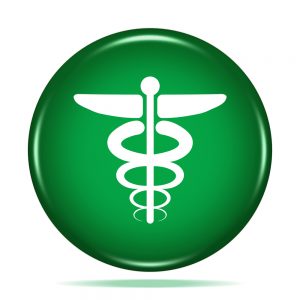 However, there are still obstacles to overcome. Cells treated with gene therapy may be vulnerable to attack by the patient’s immune system.
However, there are still obstacles to overcome. Cells treated with gene therapy may be vulnerable to attack by the patient’s immune system.
Also, the new cells could mutate and become deadly. Or the altered genes could be passed down to future generations, with unknown consequences.
So the research continues.
In America, the Department of Health and Human Services (DHHS) has oversight of gene therapy clinical trials.
To sum things up, gene therapy is a potential game-changer in the battle against a wide array of significant diseases.
Patients with afflictions that are currently incurable are hopeful that these potential breakthroughs are coming sooner rather than later.
And investors in the companies doing research are hoping to catch the profit explosion potential of gene therapy.
Contact us for a FREE, no-obligation discussion about the miraculous benefits of growth hormone restoration.
Reference

Contact Us Today For A Free Consultation
Dear Patient,
Once you have completing the above contact form, for security purposes and confirmation, please confirm your information by calling us.
Please call now: 1-800-380-5339.
Welcoming You To Our Clinic, Professor Tom Henderson.

- New Research on Hormone Replacement Therapy [Last Updated On: December 29th, 2024] [Originally Added On: March 12th, 2021]
- LCN2 Hormone Suppresses Hunger and Stops Cravings! [Last Updated On: February 4th, 2024] [Originally Added On: April 7th, 2021]
- Melatonin: The Body's Master Clock [Last Updated On: December 27th, 2024] [Originally Added On: April 8th, 2021]
- The Importance of Luteinizing Hormone [Last Updated On: December 28th, 2024] [Originally Added On: April 11th, 2021]
- Andropause From The Wikipedia Encyclopedia [Last Updated On: December 29th, 2024] [Originally Added On: April 12th, 2021]
- Finally Explained: The Mysterious Pineal Gland [Last Updated On: December 28th, 2024] [Originally Added On: April 30th, 2021]
- Hormone Therapy May Help Cut Alzheimer's Risk [Last Updated On: November 24th, 2024] [Originally Added On: May 18th, 2021]
- Androgel : Men Getting Their Mojo Back! [Last Updated On: June 3rd, 2024] [Originally Added On: May 21st, 2021]
- HGH Secretagogue [Last Updated On: November 24th, 2024] [Originally Added On: May 22nd, 2021]
- Hormone Replacement Therapy Safe, Study Suggests [Last Updated On: June 8th, 2024] [Originally Added On: May 24th, 2021]
- The HGH Recommended Medical Dosage - The Importance of Blood Work [Last Updated On: November 24th, 2024] [Originally Added On: May 25th, 2021]
- Act Now to Prevent the Increasingly Common Condition of Hypothyroidism [Last Updated On: September 22nd, 2024] [Originally Added On: June 21st, 2021]
- A Toxic Hormone is Altering the Sex and Reproduction of Aquatic Life in United States Streams [Last Updated On: November 24th, 2024] [Originally Added On: August 16th, 2021]
- New Research: Cognitive Therapy Could Reduce Menopausal Hot Flashes [Last Updated On: November 23rd, 2024] [Originally Added On: August 16th, 2021]
- Heart Benefits From Hormone Replacement Therapy? [Last Updated On: November 22nd, 2024] [Originally Added On: August 18th, 2021]
- Risks of Hormones in Early Menopause Challenged [Last Updated On: November 21st, 2024] [Originally Added On: August 24th, 2021]
- Comprehensive Hormone Replacement Therapy with Tesamorelin [Last Updated On: May 29th, 2024] [Originally Added On: September 18th, 2021]
- Early Hormone Replacement Therapy May Lower Alzheimer Risk [Last Updated On: November 14th, 2024] [Originally Added On: October 25th, 2021]
- Stimulate HGH: Growth Hormone Secretagogue: Sermorelin Acetate [Last Updated On: November 20th, 2024] [Originally Added On: October 25th, 2021]
- Growth Hormone Therapy Reverses Biological Age In Groundbreaking Study [Last Updated On: November 11th, 2024] [Originally Added On: October 25th, 2021]
- Estrogen HRT May Reduce Breast Cancer Risk [Last Updated On: November 9th, 2024] [Originally Added On: October 26th, 2021]
- Hormone Replacement Therapy is Safe [Last Updated On: November 15th, 2024] [Originally Added On: October 26th, 2021]
- The Benefits of IGF-1 [Last Updated On: November 10th, 2024] [Originally Added On: October 26th, 2021]
- Insulin-Similar Growth Factor Benefits [Last Updated On: November 16th, 2024] [Originally Added On: October 26th, 2021]
- Growth Hormone Dosage [Last Updated On: November 8th, 2024] [Originally Added On: October 26th, 2021]
- Growth Hormone Sprays [Last Updated On: November 7th, 2024] [Originally Added On: October 26th, 2021]
- The Best Ways to Boost Growth Hormone [Last Updated On: November 13th, 2024] [Originally Added On: October 26th, 2021]
- Growth Hormone Explained [Last Updated On: November 17th, 2024] [Originally Added On: October 26th, 2021]
- What Men Need To Know About Testosterone And Growth Hormone [Last Updated On: November 5th, 2024] [Originally Added On: October 26th, 2021]
- Growth Hormone and the Law [Last Updated On: November 4th, 2024] [Originally Added On: October 27th, 2021]
- Growth Hormone and the Hypothalamus Gland [Last Updated On: November 3rd, 2024] [Originally Added On: October 27th, 2021]
- Growth Hormone and Testosterone Replacement Therapy [Last Updated On: January 2nd, 2025] [Originally Added On: October 27th, 2021]
- Growth Hormone and Pneumonia [Last Updated On: November 2nd, 2024] [Originally Added On: October 27th, 2021]
- An Introduction to Growth Hormone [Last Updated On: November 1st, 2024] [Originally Added On: October 27th, 2021]
- General Physician Versus Hormone Specialist – Some Symptoms Require a Specialist to Heal [Last Updated On: August 5th, 2024] [Originally Added On: March 18th, 2022]
- Hormone Impacts And Function Of HGH [Last Updated On: December 20th, 2024] [Originally Added On: July 10th, 2022]
- Cheaping Out on HGH Therapy – JUST DON’T DO IT [Last Updated On: August 18th, 2024] [Originally Added On: July 12th, 2022]
- Slow Aging with Growth Hormone [Last Updated On: June 18th, 2024] [Originally Added On: July 17th, 2022]
- Hormone Therapies: How They Have Evolved and Are Evolving [Last Updated On: August 9th, 2024] [Originally Added On: February 10th, 2023]
